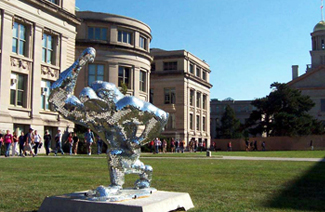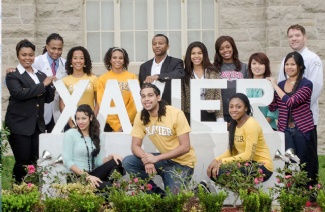新
Questions 11-21 are based on the following passage.
This passage is adapted from Francis J. Flynn and Gabrielle S. Adams, "Money Can't Buy Love: Asymmetric Beliefs about Gift Price and Feelings of Appreciation." ©2008 by Elsevier Inc.
1Every day, millions of shoppers hit the stores in full force—both online and on foot—searching frantically for the perfect gift. Last year, Americans Line spent over $30 billion at retail stores in the month of December alone. Aside from purchasing holiday gifts, most people regularly buy presents for other occasions throughout the year, including weddings, birthdays, anniversaries, graduations, and baby Showers. This frequent experience of gift-giving can engender ambivalent feelings in gift-givers. Many relish the opportunity to buy presents because gift-giving offers a powerful means to build stronger bonds with one's closest peers. At the same time, many dread the thought of buying gifts; they worry that their purchases will disappoint rather than delight the intended recipients.
2 Anthropologists describe gift-giving as a positive social process, serving various political, religious, and psychological functions. Economists, however, offer a less favorable view. According to Waldfogel (1993), gift-giving represents an objective waste of resources. People buy gifts that recipients would not choose to buy on their own, or at least not spend as much money to purchase (a phenomenon referred to as "the deadweight loss of Christmas"). To wit, givers are likely to spend $$100 to purchase a gift that receivers would spend only $$80 to buy themselves. This "deadweight loss" suggests that gift-givers are not very good at predicting what gifts others will appreciate. That in itself is not surprising to social psychologists. Research has found that people often struggle to take account of others' perspectives— their insights are subject to egocentrism, social projection, and multiple attribution errors.
3 What is surprising is that gift-givers have considerable experience acting as both gift-givers and gift-recipients, but nevertheless tend to overspend each time they set out to purchase a meaningful gift.
4 In the present research, we propose a unique psychological explanation for this overspending problem—i.e., that gift-givers equate how much they spend with how much recipients will appreciate the gift (the more expensive the gift, the stronger a gift-recipient's feelings of appreciation). Although a link between gift price and feelings of appreciation might seem intuitive to gift-givers, such an assumption may be unfounded. Indeed, we propose that gift-recipients will be less inclined to base their feelings of appreciation on the magnitude of a gift than givers assume.
5 Why do gift-givers assume that gift price is closely linked to gift-recipients' feelings of appreciation? Perhaps givers believe that bigger (i.e., more expensive) gifts convey stronger signals of thoughtfulness and consideration. According to Camerer (1988) and others, gift-giving represents a symbolic ritual, whereby gift-givers attempt to signal their positive attitudes toward the intended recipient and their willingness to invest resources in a future relationship. In this sense, gift-givers may be motivated to spend more money on a gift in order to send a "stronger signal" to their intended recipient.
6 As for gift-recipients, they may not construe smaller and larger gifts as representing smaller and larger signals of thoughtfulness and consideration. The notion of gift-givers and gift-recipients being unable to account for the other party's perspective seems puzzling because people slip in and out of these roles every day, and, in some cases, multiple times in the course of the same day. Yet, despite the extensive experience that people have as both givers and receivers, they often struggle to transfer information gained from one role (e.g., as a giver) and apply it in another, complementary role (e.g., as a receiver). In theoretical terms, people fail to utilize information about their own preferences and experiences in order to produce more efficient outcomes in their exchange relations. In practical terms, people spend hundreds of dollars each year on gifts, but somehow never learn to calibrate their gift expenditures according to personal insight.
20.The graph following the passage offers evidence that gift-givers base their predictions of how much a gift will be appreciated on
A . the appreciation level of the gift-recipients.
B . the monetary value of the gift.
C . their own desires for the gifts they purchase.
D . their relationship with the gift-recipients.
答案解析
Choice В is the best answer. The graph clearly shows that gift-givers believe that a "more valuable" gift will be more appreciated than a "less valuable gift." According to the graph, gift-givers believe the monetary value of a gift will determine whether that gift is well received or not. Choice A is incorrect because the graph does not suggest that gift-givers are aware of gift-recipients' appreciation levels. Choices С and D are incorrect because neither the gift-givers' desire for the gifts they purchase nor the gift- givers' relationship with the gift-recipients is addressed in the graph.
相关推荐:

















